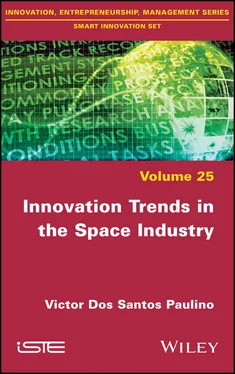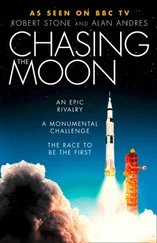To answer these questions, we propose to use the industry lifecycle theory (Anderson and Tushman 1990; Gustafsson et al . 2016; Klepper 1997, 2010; Klepper and Graddy 1990; Utterback and Abernathy 1975). This theory is one of the most important for understanding innovation (Dodgson et al . 2008). It breaks down the development of the industry into distinct phases: birth/emergence, growth/takeoff, maturity, and decline. In addition, it identifies several lifecycles such as product, innovation, and adoption. This makes it possible to study the dynamics of an industry according to essential dimensions such as sales and innovation rates. Lifecycle theory will be at the heart of this book, but it has some limitations. First, the influence of demand on the evolution of the industry is poorly understood since attention is generally focused on the role of producers (Di Stefano et al . 2012; Forbes and Kirsch 2011; Saviotti and Pyka 2013). This poses a challenge to understand the evolution of industries in which institutional customers, such as Ministries of Defence, play a major role, as is the case in space (Malik 2017; Mowery and Rosenberg 1989; Scranton 2006; Spencer et al . 2005). Another limitation is that the birth of an industry remains a relatively unstudied phenomenon. (Aldrich and Fiol 1994; Forbes and Kirsch 2011; Nygaard 2008; Zhen and Démil 2015). This seems to us to be problematic because the characteristics of the emergence phase seem to have lasted for many years in the space industry. Examples include low competition, niche markets, and intense innovation efforts.
Studying the long-term evolution of the space industry in light of economic considerations leads us to show that customers have a strong influence on the emergence of the space industry and innovation. By customers, we mean Ministries of Defence, space agencies (e.g. NASA, CNES, ISRO), and commercial satellite operators (e.g. SES, Intelsat, Arabsat, Türksat). First, we show that the space industry is characterized by a long emergence phase that lasts more than 50 years (1). We then show that customers are shaping the industry by helping to create four distinct periods between 1957 and 2011 (2). The influence of customers is observed through the pursuit of five objectives. Military customers have created the industry by pursuing three objectives: military, national prestige, and science and technology. This has led to iconic space programs such as Sputnik and “GPS.” Space agencies (e.g. NASA, CNES, and ISRO) shape the industry by pursuing certain objectives similar to military customers such as those of national prestige and science and technology. However, they also pursue their own objective, that of economic benefits. Their iconic programs have been, for example, the Apollo and the International Space Station programs. Finally, commercial satellite operators have a single objective of their own: the pursuit of profits. By focusing on the weight of the science and technology objective among customers between 1957 and 2011, we observe a slowdown in innovation in the industry (3). Over time, the space industry has become kind of a “sleeping beauty” with underexploited technological and commercial potential.
These results contribute to an understanding of the long-term evolution of the space industry in light of economic considerations such as the role of customers, innovation efforts, and industry lifecycle theory. These results also extend the scope of the lifecycle theory to the space industry. By emphasizing the central role of customers, we reinterpret the role of supply and demand during the emergence phase. We also observe that the pursuit of profits remains a secondary objective for customers during the emergence phase.
Innovation strategies of space firms
The slowdown in innovation observed in the space industry is leading to the emergence of a paradox. Satellites are high-tech products that carry few recent electronic components and are developed through processes largely inspired by what was done in the 1950s. How should the conservatism of this high-tech industry be interpreted? Are the innovation strategies of satellite producers irrational and do they jeopardize their survival? On the contrary, do space activities require a certain inertia?
We have chosen to refer to evolutionary work to answer these questions. The interpretation of delays in the adoption of technological innovations is a matter of debate. The dominant view is that adoption delays are dangerous for the survival of organizations. Nevertheless, some research on industries close to the space industry has shown that too rapid adoption of new technologies can jeopardize the survival of organizations (Anderson and Tushman 1990; Musso 2009). One example is Rosenberg’s (1976) pioneering study on the aviation industry. Within the framework of this evolutionary work, there is also a debate about whether organizational change promotes organizational survival or mortality (Hannan and Freeman 1984; Nelson and Winter 1982). In this book, we consider that these different perspectives about the effects of innovation on organizations’ survival must be seen as complementary (Carroll and Teo 1996).
The study of innovation strategies of space firms leads us to highlight the existence of a positive link between slow adoption of innovations, product reliability and organizational survival. On the one hand, we show that the slow adoption of technological innovations is rational behavior when it allows reliability to be maintained. This strategy is mainly explained by risk aversion. On the other hand, it appears that the slow adoption of organizational innovations promotes the survival of organizations when the environment is risky. This strategy aims to maintain the high levels of reliability achieved during successful space missions by achieving rigorous organizational replication (i.e. replication of processes, rules, and methods). There are several similarities between these two strategies, which we call inertia strategies. First, the inertia strategy is not immobility but a prudent adoption of innovations. Then, these strategies are observed in a risky context as is the case in space activities. Finally, these strategies generally lead to delays in the adoption of innovations, even in the case of a high-tech industry.
These results explain why the slow adoption of innovations is a key success factor in the space industry. In a risky environment, this ensures the high levels of reliability required. We consider inertia strategies to be a rational response of space organizations. It is, therefore, necessary to reinterpret the notion of inertia within innovation management. As Rosenberg (1976) suggested, adopting innovations carefully can be more effective for the survival of organizations than adopting them too quickly. As a result, some technological and organizational delays reflect the control of a key success factor and not a weakness that must be reduced by accelerating innovation.
By studying the advantages of prudent adoption, we can interpret the conservatism displayed by a high-tech industry. However, our work ignores the risks of overly rigorous inertia strategies that would lead to underestimating high-potential innovations. The current acceleration of the commercialization of space forces existing firms to question whether they are facing innovations of this type.
Strategic diagnosis of new technologies
Artificial intelligence, big data, 3D printing, Internet of things, and miniaturization of satellites: these technologies feed into the last phase of the acceleration of the commercialization of space and could also be substitutes for some existing space technologies. In this context, existing firms are seeking to determine whether these technological promises are threats to be taken seriously or are rather a fad, which often exists with new technologies.
Читать дальше












